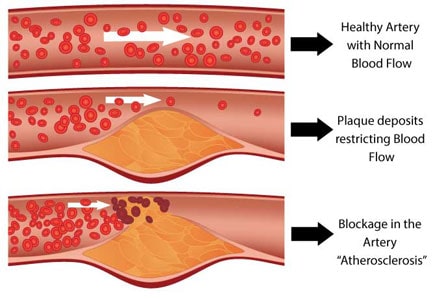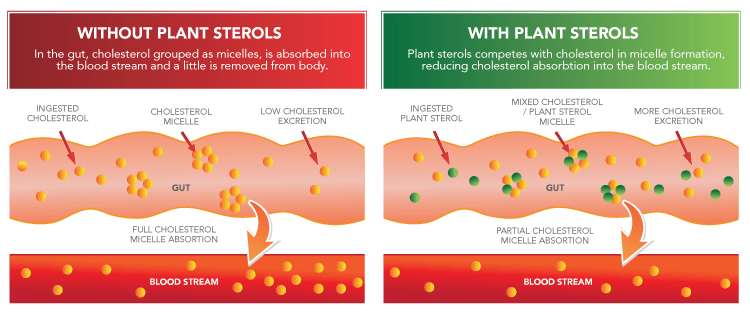Cholesterol
Understand what is cholesterol, and what are the bad and good types of cholesterol.
Understanding Cholesterol
What is cholesterol and what does it do? Discover about LDL bad and HDL good types of cholesterol, and how it impacts your risk of heart disease.
What is Cholesterol
Cholesterol is a waxy substance found naturally in the blood. The body needs a certain amount of cholesterol, however your liver usually makes all the cholesterol you need.
Three Functions of Cholesterol
There are three main functions performed by cholesterol:
- It helps make the outer coating of cells, so that they are flexible and permeable.
- It makes up the bile acids that work to digest food in the intestine.
- It allows the body to make Vitamin D and hormones, like oestrogen in women and testosterone in men.
Risk of Heart Disease
The cholesterol that you ingest through your diet (red meat, processed meats, high fat cheese, butter, eggs) if eaten in excess, can lead to too much cholesterol building up in the blood. A high cholesterol level increases the risk of heart disease.
Following a healthy diet and lifestyle can help to lower blood cholesterol, which can help lower your risk of developing heart disease.

Cholesterol Test
The Cholesterol levels vary from person to person. This can be measured by a simple blood test that is a cholesterol test.

Good and Bad Cholesterol
The Good, the bad, and how much cholesterol is too much?
Types of Cholesterol
In the blood, there are two main types of cholesterol:
- LDL or low-density lipoprotein is known as the bad cholesterol.
- HDL or high-density lipoprotein cholesterol, which is the good cholesterol.
Together, they both form our total cholesterol .
LDL Cholesterol
LDL cholesterol is the “bad” type of cholesterol. If there is too much LDL cholesterol in the blood, it can slowly build up in the arteries, making them narrower. This increases the risk of heart disease. The lower the LDL cholesterol, the lower the risk of heart disease.
HDL Cholesterol
HDL cholesterol or the “good” cholesterol helps to remove excess cholesterol from the bloodstream and returns it to the liver. That is where it is broken down and passed out of the body.

